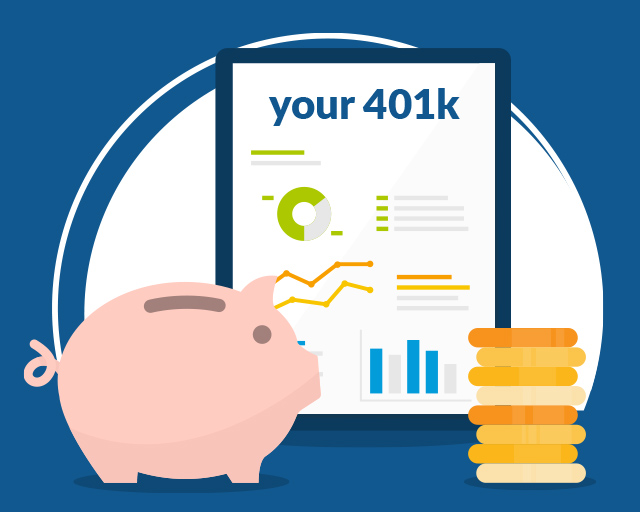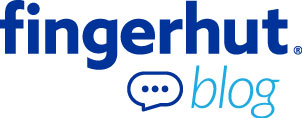

Raise your hand if you’re looking forward to the day you can retire. We’re right there with you.
If you’ve already started saving, don’t stop. If you haven’t started, it’s not too late. There are plenty of options out there. What you can use and how much money you can add to them each year depends on your individual situation.
Take time to do your own research and absolutely, positively check with a tax professional, the benefits representative at work, your accountant or the IRS so you understand all of your options and their rules.
Ready to learn more about those 5 popular ways to save for retirement? Here they are:

This is the most common type of retirement plan sponsored by employers. With this type of plan, you decide how much you want to contribute (that’s a fancy word for save) every pay period and your employer transfers the money into an account for you. With that account, you’ll be able to invest the money in whatever options the company’s plan has available. That could mean mutual funds, individual stocks, money market accounts and more.
Your contributions are made before taxes are taken out of your pay, so you’ll see lower taxes on your check. Plus, you don’t have to pay any taxes on your 401k earnings until you withdraw the money at retirement, when it’s possible your tax rate will be lower.
Some employers may even offer a match for your contributions. Check with your HR rep for all of the important details for your plan, like the maximum you can contribute, how to get an employer match, and how long you need to stay in the plan to get that money.1
One of the best parts of having a 401k at work is that you can also have other retirement plans, like a traditional or Roth IRA.

If you are one of the many people who works for themselves, a solo 401k may be a good option for your main retirement savings. The only requirement is that you don’t have any employees. If your spouse works for you, they don’t count as an employee (according to the IRS) but can be covered under your 401k plan.
As the business owner in this plan you wear two hats – employee and employer – and can make contributions to the plan as both. Yes! Otherwise, these plans have the same rules and requirements as any other 401(k) plan.2 For this type of 401k, we strongly encourage you to talk with a professional who can walk you through the benefits, guidelines and contribution limits.

If you don’t have access to a 401k through your employer, an individual retirement account or IRA is an easy choice.
Think you need lots of money to start saving for retirement? Not with an IRA. You can get started with just $50 at a bank, online brokerage or mutual fund company.3
You decide how your money is invested: in interest-bearing accounts, investment funds such as mutual funds or bond accounts, or a combination of all of these.4
You can even have your contributions automatically deducted from your checking or savings account. How easy is that? And even if you do have a 401k through work, you can also have a traditional IRA as an extra retirement savings option.
You may also be able to deduct IRA contributions on your tax return, so check with that tax pro we keep mentioning. They can also tell you the limits on what you can contribute each year.

How is this different from a traditional IRA? First, it’s an after-tax IRA, so when you add money to it, you’ve already paid taxes on it. When you retire and start withdrawing money, neither the original money nor any earnings you made are taxable as income, as long as your Roth IRA has been open for at least five years. If the amount in the fund has grown, that can mean major tax savings.5
Because your contributions are after taxes, you can’t deduct them from your tax return. You can, however, keep making contributions to a Roth IRA after you reach age 70 ½ and you can leave money in it as long as you live.6
Like a traditional IRA, you decide how your money is invested. Also, the same combined contribution limit applies to Roth and traditional IRAs. And yes, a Roth IRA can be used in addition to an employer-sponsored 401k.

This is a wonderful option for married couples who file taxes jointly and only one of them works and brings home a paycheck.
That means if you’re a stay-at-home parent or don’t work, you can set up an IRA in your name. Great news, right? Now you can see your very own retirement savings grow over the years.
Like all IRAs, you can choose between the traditional or Roth options, as well as the investments you’ll make in it. You can set up your IRA with your bank or an online brokerage or mutual fund company. And like we mentioned earlier in the section on traditional IRAs, you can usually get started with a small amount of money.
Each spouse can make a contribution up to the current limit, and the total of your combined contributions can’t be more than the taxable compensation reported on your joint return.7
one last thought
Once you put the money in a retirement account don’t touch it. You’ll be surprised how it adds up over the years. If you withdraw money before retirement, you’ll lose principal and interest, and you may lose tax benefits or have to pay withdrawal penalties. If you change jobs, you can leave your savings invested in your current retirement plan or roll them over to an IRA or your new employer’s plan.1
2 https://www.irs.gov/retirement-plans/one-participant-401k-plans
3 https://www.aarp.org/money/investing/info-2020/why-use-iras-for-nest-egg.html
4 https://www.experian.com/blogs/ask-experian/what-is-an-ira/
5 https://www.experian.com/blogs/ask-experian/what-is-a-roth-ira/
6 https://www.irs.gov/retirement-plans/amount-of-roth-ira-contributions-that-you-can-make-for-2021








